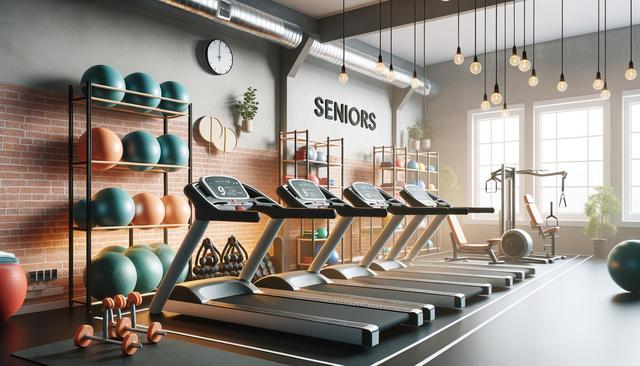Why Exercise Matters More with Age
As we grow older, maintaining physical fitness becomes increasingly essential to preserve independence and quality of life. Regular gym workouts offer seniors a structured and safe environment to stay active. Exercise helps combat age-related muscle loss, supports cardiovascular health, and enhances balance, reducing the risk of falls. It also contributes to mental wellness by lowering stress levels and promoting better sleep.
The body’s natural aging process leads to a decline in bone density, muscle mass, and flexibility. Incorporating strength training, light cardio, and stretching into a gym routine can help slow down or even reverse some of these effects. Staying active can also support the management of chronic conditions such as arthritis, diabetes, and hypertension.
Some important reasons seniors should consider joining a gym include:
- Improved heart and lung function
- Increased muscle strength and endurance
- Enhanced mobility and coordination
- Opportunities for social interaction
With guidance from trained professionals, seniors can create personalized plans that address their individual health needs and fitness goals.
Choosing the Right Gym Environment
Not all gyms are created equal, and for older adults, choosing the right gym can make a significant difference in the overall experience. A senior-friendly gym should be welcoming, safe, and equipped with accessible machines. Look for facilities that offer programs or classes specifically designed for seniors, such as low-impact aerobics, chair yoga, or water-based exercises.
When selecting a gym, consider the following:
- Staff qualifications and experience with older adults
- Availability of personal trainers who specialize in senior fitness
- Cleanliness and accessibility of equipment
- Options for group classes that promote community and motivation
It’s also helpful to choose a gym that offers flexible scheduling and a comfortable atmosphere. Feeling at ease and supported can encourage consistency and long-term commitment to fitness goals.
Types of Exercises Beneficial for Seniors
A balanced workout routine for seniors should include a mix of strength, cardiovascular, flexibility, and balance training. Each type of exercise offers distinct benefits that support overall physical health and functionality.
Recommended workout components include:
- Strength training: Using resistance machines, light dumbbells, or resistance bands to build muscle mass and bone density
- Cardiovascular activities: Walking on a treadmill, cycling, or swimming to improve heart and lung capacity
- Flexibility exercises: Gentle stretching or yoga to maintain joint range of motion
- Balance exercises: Tai chi or standing leg lifts to reduce fall risk
Working with a fitness professional can help tailor these exercises to accommodate any physical limitations and ensure safe execution. Gradual progression is key to avoiding injury and encouraging steady improvement.
Safety Tips and Precautions
Safety should always be a top priority when seniors engage in gym activities. Proper warm-ups and cool-down periods are essential to prepare the body and prevent muscle strain. Hydration is also crucial, as older adults may not feel thirst as acutely as younger individuals.
Here are some important safety tips:
- Consult a healthcare provider before starting any new exercise program
- Start slowly and increase intensity gradually
- Listen to your body and stop if you feel pain or dizziness
- Use equipment correctly and ask for assistance when needed
- Ensure proper footwear to support balance and reduce injury risk
Many gyms offer orientation sessions or initial assessments to familiarize new members with equipment and develop a safe workout plan. Taking advantage of these services can boost confidence and help avoid common pitfalls.
Staying Motivated and Consistent
Maintaining motivation can be a challenge, especially for seniors who are new to gym workouts. Setting realistic and achievable goals is an effective strategy to stay on track. Whether it’s improving walking distance, lifting slightly heavier weights, or participating in a group class regularly, small milestones can create a sense of accomplishment.
Other ways to stay motivated include:
- Finding a workout buddy or joining group classes
- Tracking progress in a fitness journal
- Celebrating achievements, no matter how small
- Varying workouts to keep them interesting
Gyms often offer a supportive community environment where seniors can connect with others who share similar health goals. This social aspect can be just as beneficial as the physical activity itself, contributing to emotional well-being and reducing feelings of isolation.
Conclusion: Embracing Fitness at Any Age
Joining a gym can be a transformative decision for seniors looking to improve their health and maintain independence. With the right environment, personalized training, and supportive community, older adults can enjoy a wide range of physical and mental benefits. Staying active is not about perfection or competition—it’s about enhancing quality of life, one step at a time.




Leave a Reply